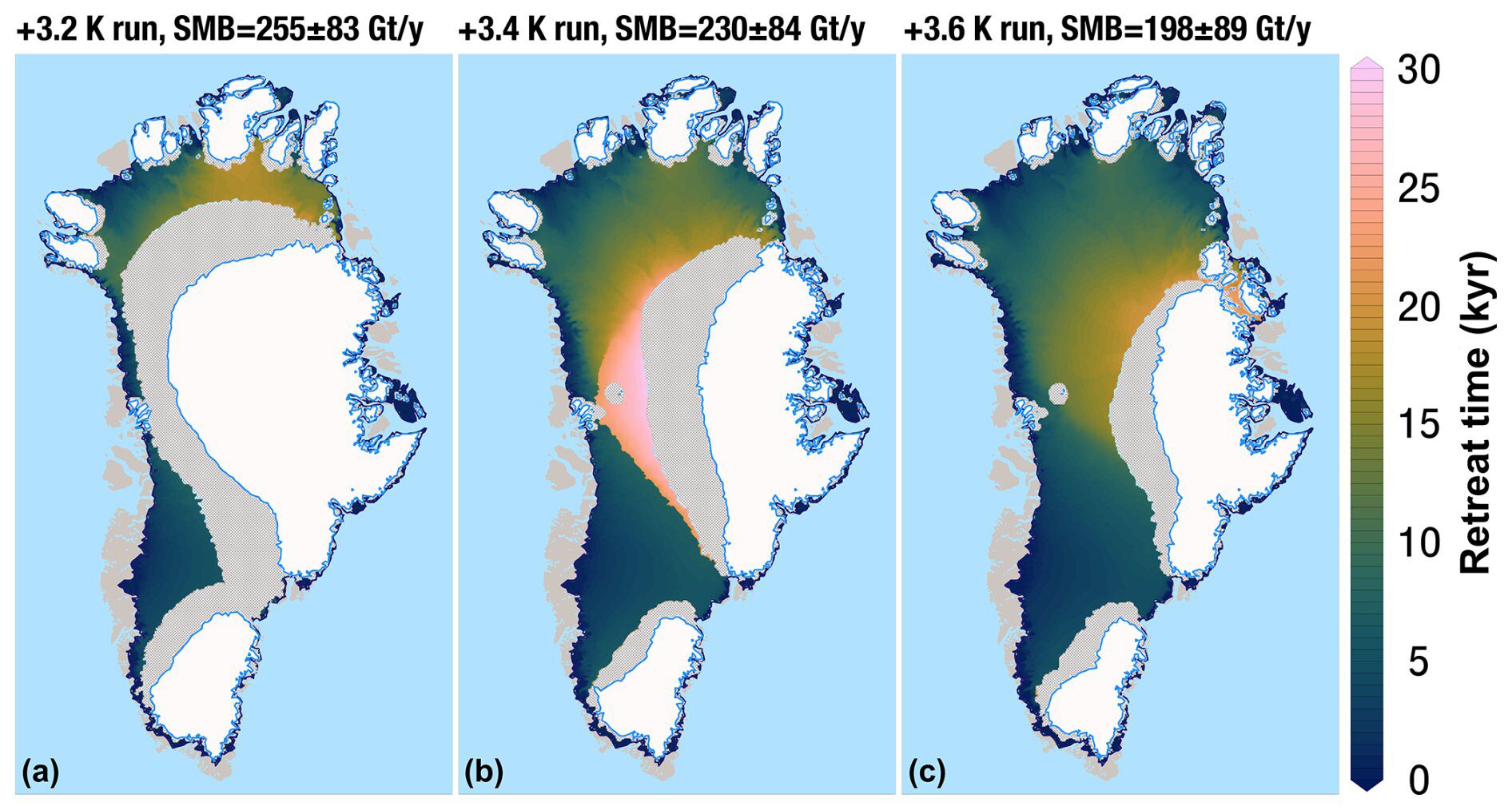

Covering over 1.7 million square kilometers, the Greenland ice sheet stands as the largest supply of freshwater in the northern hemisphere. Since the 1980s, it has lost more than a trillion tonnes of its mass, with melting rates accelerating to six times higher over the past decade. Additionally, recent findings indicate an alarming loss of around 30 million tonnes of ice every hour.
The ongoing melting of the ice sheet due to warmer temperatures in the atmosphere and ocean has significant implications, including rising sea levels and alterations in ocean salinity. These changes can critical impact local marine ecosystems and pose substantial challenges for coastal communities, with forecasts suggesting a possible increase of 7 meters in sea levels should the entire ice sheet completely melt.
New research, published in The Cryosphere, has pinpointed a tipping point beyond which ice mass loss may become irreversible, potentially resulting in full melting. Dr. Michele Petrini and the team from Norway’s Bjerknes Centre for Climate Research evaluated the surface mass balance of Greenland’s ice sheet by analyzing the difference between snowfall accumulation and losses from melting.
Utilizing modeling techniques, the researchers simulated how various climates affect the surface mass balance. They discovered that a loss of around 230 gigatons of ice in a single year—equating to 60% of the surface mass balance compared to pre-industrial levels—serves as a crucial tipping point, which could trigger a relatively swift decline (geologically, over 8–40,000 years) toward the complete disappearance of the Greenland ice sheet.
This tipping point correlates with a global average temperature rise of 3.4°C. To provide context, in 2024, the global mean temperature hit 1.5°C above pre-industrial levels, a threshold set by the 2015 Paris Agreement to mitigate climate change impacts for the first time.
Dr. Petrini and his colleagues found that elevation, influenced by the ice sheet’s topography, significantly impacts the surface mass balance. As the ice retreats, remnant pockets may persist as ice caps in high-altitude regions. Notably, glacial isostatic adjustment plays a crucial role, as melting ice reduces pressure on the underlying bedrock, allowing the land to rise over centuries to millennia.
If the rate of melting exceeds the uplift from glacial isostatic adjustment, the ice mass balance shifts from around 50% loss to nearly total melting of the Greenland ice sheet. This negative surface mass balance could persist for thousands of years.
As the century progresses, ice loss from surface melting is expected to surpass that from the ice sheet’s edges retreating into warmer oceans. Additionally, ice loss will be aggravated by surface albedo feedbacks, where decreased ice cover reduces the reflective “white” surface, causing more solar energy to be absorbed by the darker land and ocean, which further raises temperatures and accelerates melting—creating a positive feedback loop.
Importantly, the researchers highlighted a section of the Greenland ice sheet located to the west that could significantly influence its eventual fate. If this western margin, characterized by high elevation, remains intact, ice loss to the north and south is reduced; however, should it lose coastal connectivity, the ice sheet may retreat eastward, possibly resulting in a mass loss exceeding 80%.
Simulations have indicated that this ice sheet may have benefited from high western topography and ice caps during the last interglacial period, approximately 130–115,000 years ago, preventing total ice loss. This region could represent a glimmer of hope; as long as a considerable ice presence is maintained on the coastal western margin, the Greenland ice sheet might be stable enough to avoid surpassing the threshold for complete disappearance.
The researchers acknowledge that their model does not account for potential ice-atmosphere feedback mechanisms, which could increase cloud cover and precipitation over the ice sheet’s interior, potentially aiding thickening. However, they believe such factors would not significantly alter their findings, as isostatic rebound is seen as more impactful.
Ultimately, they caution that human-induced climate change is pushing us perilously close to these and other tipping points globally. Thus, urgent actions are needed to combat climate change and prevent crossing critical temperature thresholds.
For further details:
Michele Petrini et al, A topographically controlled tipping point for complete Greenland ice sheet melt, The Cryosphere (2025). DOI: 10.5194/tc-19-63-2025.
© 2025 Science X Network
Citation: Study reveals potential total melting of Greenland ice sheet after crossing specific tipping point (2025, February 11). Retrieved 11 February 2025 from https://phys.org/news/2025-02-greenland-ice-sheet-fully-specific.html
This document is subject to copyright. Aside from fair dealing for private study or research, no portion may be reproduced without written permission. The content serves informational purposes only.









